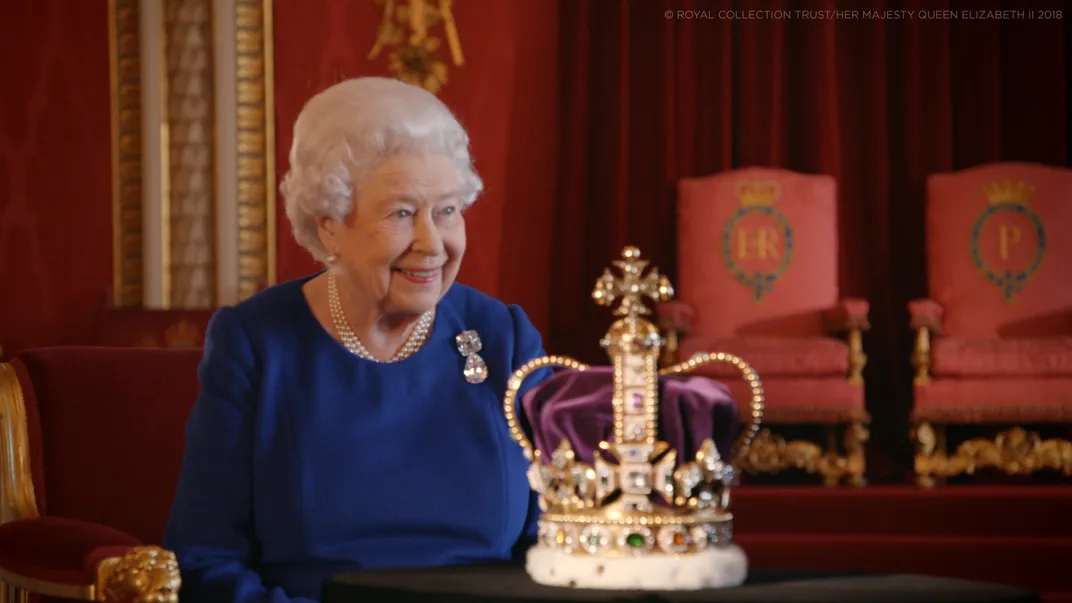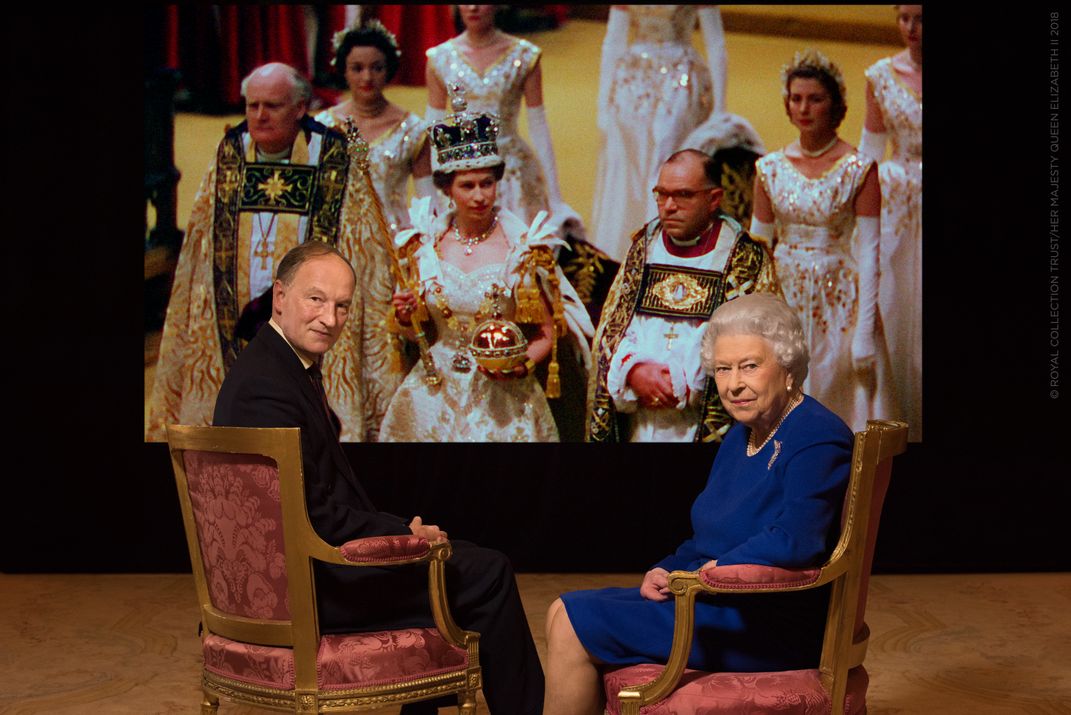Sixty-Five Years Later, the Queen Recalls Her Coronation
New Smithsonian Channel special has rare Queen Elizabeth II interview and offers a closeup of the Crown Jewels
It was first worn by England’s Edward the Confessor in the 11th century—mostly on holidays. It became a holy relic when he was canonized in 1161.
St. Edward’s Crown, as it came to be called, was meant to adorn subsequent royalty on their coronations, and was used for that purpose from the 13th to the 17th century.
After Parliament abolished the monarchy in 1649 during the English Civil War, it was melted down altogether.
A restored version of the crown, made for Charles II in 1661, is the one that was worn in 1911 by George V, in 1937 by George VI and during the last coronation, of his daughter, nearly 65 years ago.
Queen Elizabeth II wore the crown exactly once: On her own coronation day, June 2, 1953, 16 months after she took the throne following the death of her father King George VI at the age of 25. It has not been worn since.
Now, to mark the 65th anniversary, the monarchy will take part in a one-hour special, airing this Sunday on the Smithsonian Channel, in partnership with the BBC and the Australian Broadcasting Corporation.
The Coronation, to be broadcast across three continents, will feature commentary from the Queen herself. “It is sort of a pageant of chivalry and old-fashioned way of doing things really,” she says in the film. “I’ve seen one coronation, and been the recipient in the other, which is pretty remarkable.”
At a time when audiences are getting to know the early years of her reign through fictional entertainment series such as The Crown, the Queen herself will recall that day in Westminster Abbey when she was crowned at age 27 in a ceremony seen by 300 million people throughout the world— the most watched event in history, and the first time an event from Europe was broadcast live worldwide.
The Coronation also comes at a time of royal fever, as the world prepares for the impending marriage of Elizabeth's grandson, Prince Harry, to the American actress Meghan Markle on May 19 at Windsor Castle.
Longtime Royals reporter Alastair Bruce conducted the rare interview with Queen Elizabeth II, 91, who sits gingerly in a wooden chair to view private and official film footage of the big day.
Never before has the queen publicly spoken about her 1953 coronation—nor has she ever seen footage of herself, Smithsonian Channel says.
Never mind the heavy weight of the expectations of postwar England; it was challenge enough adjusting to wearing the heavy, historic crown, the Queen says.
“You can’t look down to read the speech, you have to take the speech up. Because if you did, your neck would break and it [the crown] would fall off,” she says.
“So there are some disadvantages to crowns, but otherwise they are quite important things,” Queen Elizabeth II says. “It’s sort of, I suppose, the beginning of one’s life, really, as a sovereign.”
Weighing nearly five pounds, the St. Edwards Crown stood a foot tall on her head, festooned with 444 precious and semi-precious stones. It was so heavy, she switched to the lighter, three-pound Imperial State Crown for the rest of the festivities. That is the crown she wears at formal occasions such as the opening of Parliament, when she gives her speech outlining the government’s legislative plans.
The St. Edwards Crown is one part of the Crown Jewels, a collection of 140 items containing 23,000 precious stones. Not only one of the most important art collections in the world, they are sacred objects from the most complete collection of royal regalia still in existence.
New, close-up, high-resolution footage of the objects allows them to glow anew as their centuries-old significance is explained.
The Regalia are the best known, if least understood, symbols of the kingdom, bearing the familiar crown and orb insignia still displayed on post boxes, police helmets and official papers, an emblem of authority that dates back to before the Saxons arrived.
Other eyewitness accounts of the 1953 event are shared in The Coronation. One is that of Lady Glenconner, a maid of honor who nearly fainted at the Westminster Abbey event. Also interviewed is the 12-year-old choirboy left to sing solo when his colleagues, seemingly overwhelmed by the moment, lost their voices.
Other surprising details about the event come from Her Majesty herself.
Her recollection of that fairy tale-like ride from Westminster Abbey to Buckingham Palace through the streets of London in a golden, horse-drawn carriage, for example?
“Horrible,” she says.
Just as the ceremony was ancient, so was the suspension system, apparently. “It’s only sprung on leather,” the Queen says. “Not very comfortable.”
“The Coronation” airs Sunday, Jan. 14, at 8 p.m. on the Smithsonian Channel.
Ed Note: The suspension system of the Queen's carriage was not sprung on a lever, but rather on leather. A reader listened more carefully than we did. We regret the error.
/https://tf-cmsv2-smithsonianmag-media.s3.amazonaws.com/accounts/headshot/RogerCatlin_thumbnail.png)

/https://tf-cmsv2-smithsonianmag-media.s3.amazonaws.com/filer/fb/ae/fbae7556-19d2-44ef-a6c0-b7426ab6ffd2/her_majesty_the_queen_with_archive_footage_photo_julian_calder_c_her_majesty_the_queen_copyright.jpg)

/https://tf-cmsv2-smithsonianmag-media.s3.amazonaws.com/accounts/headshot/RogerCatlin_thumbnail.png)